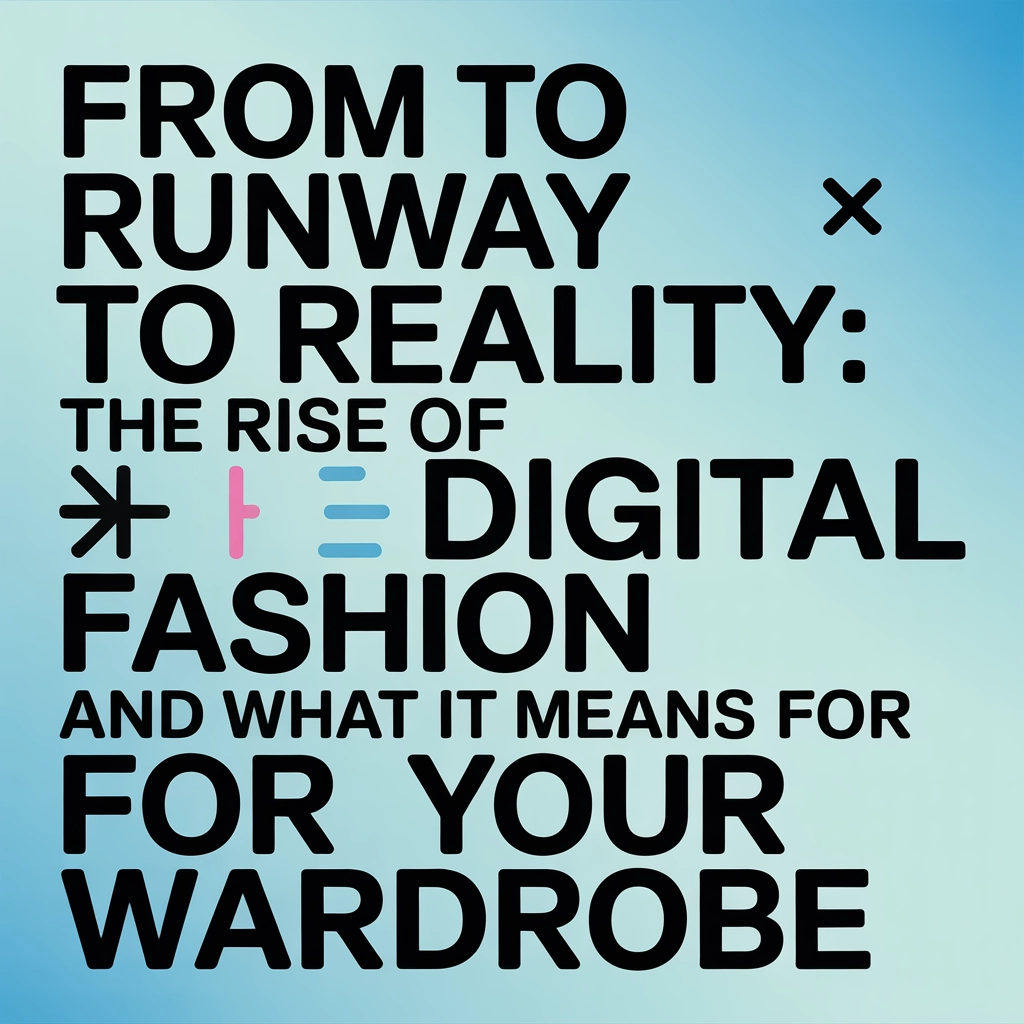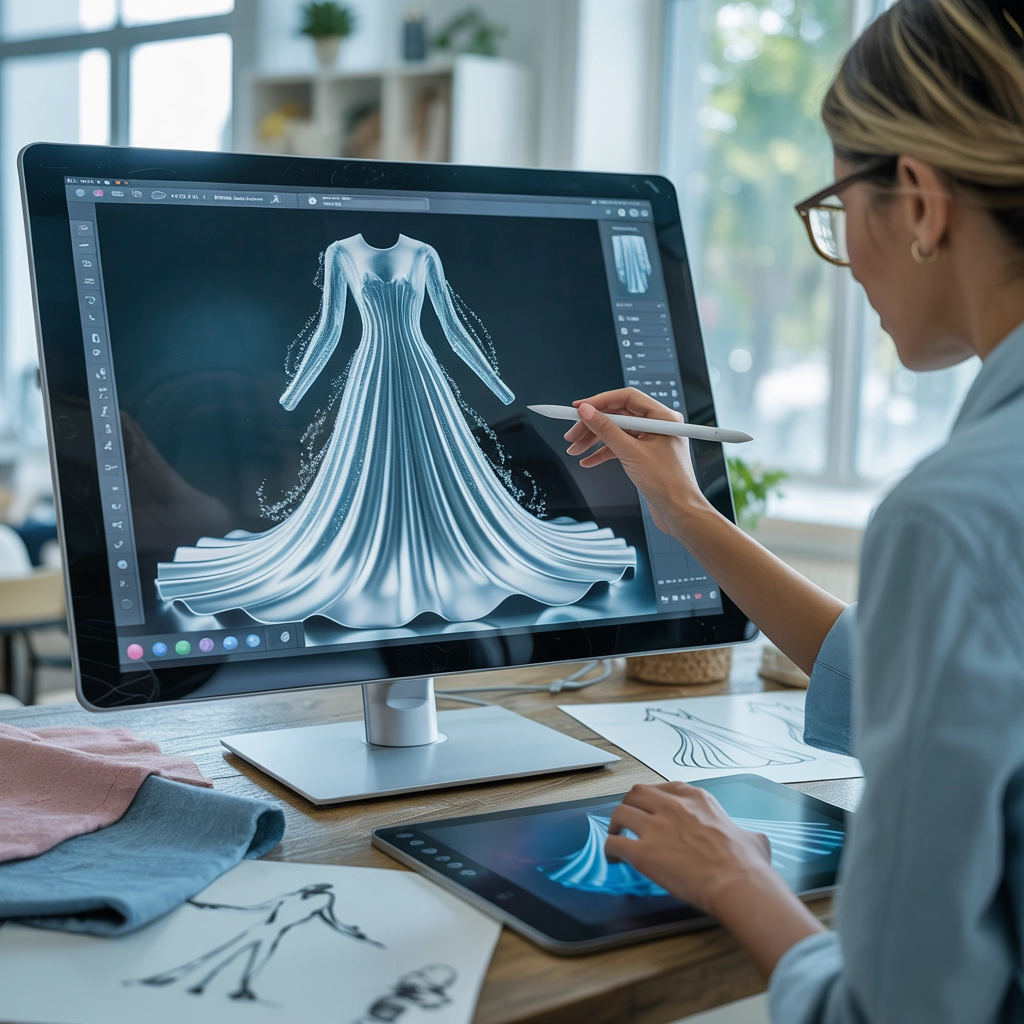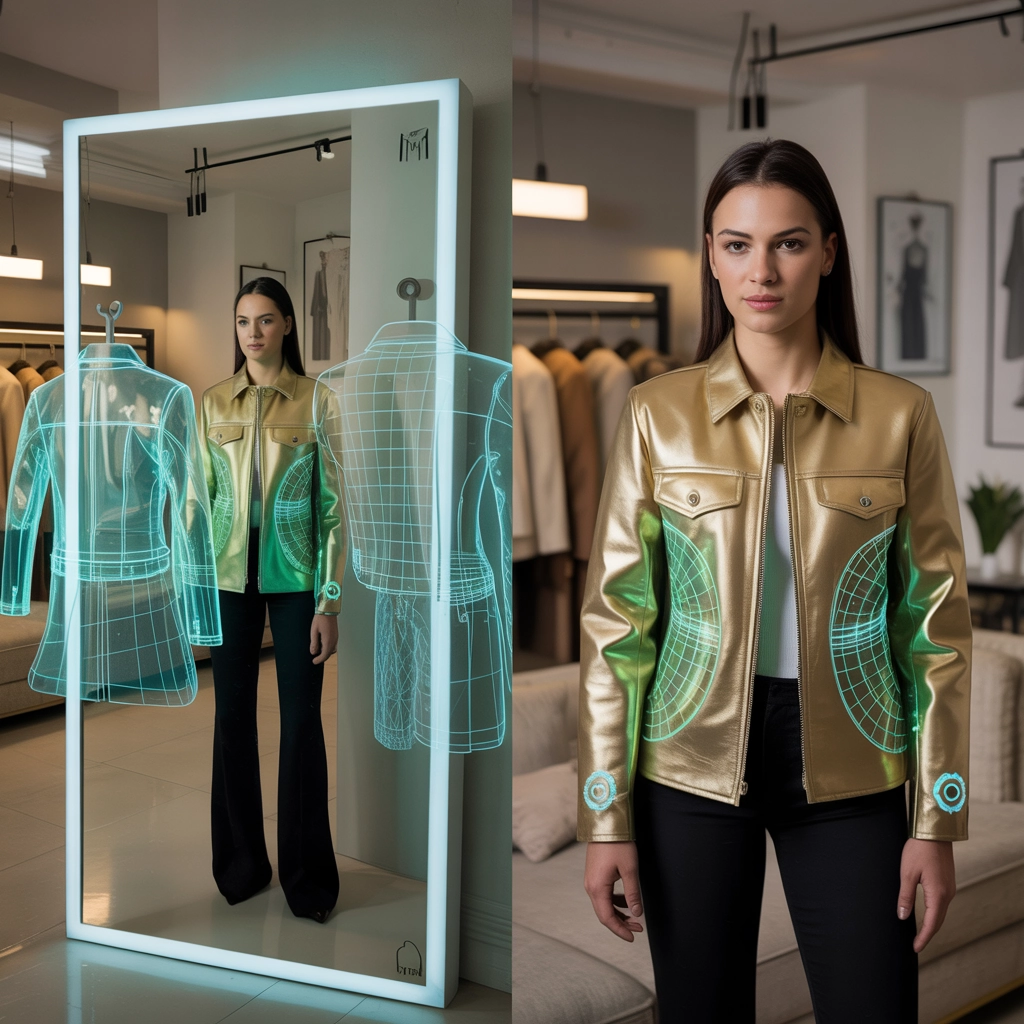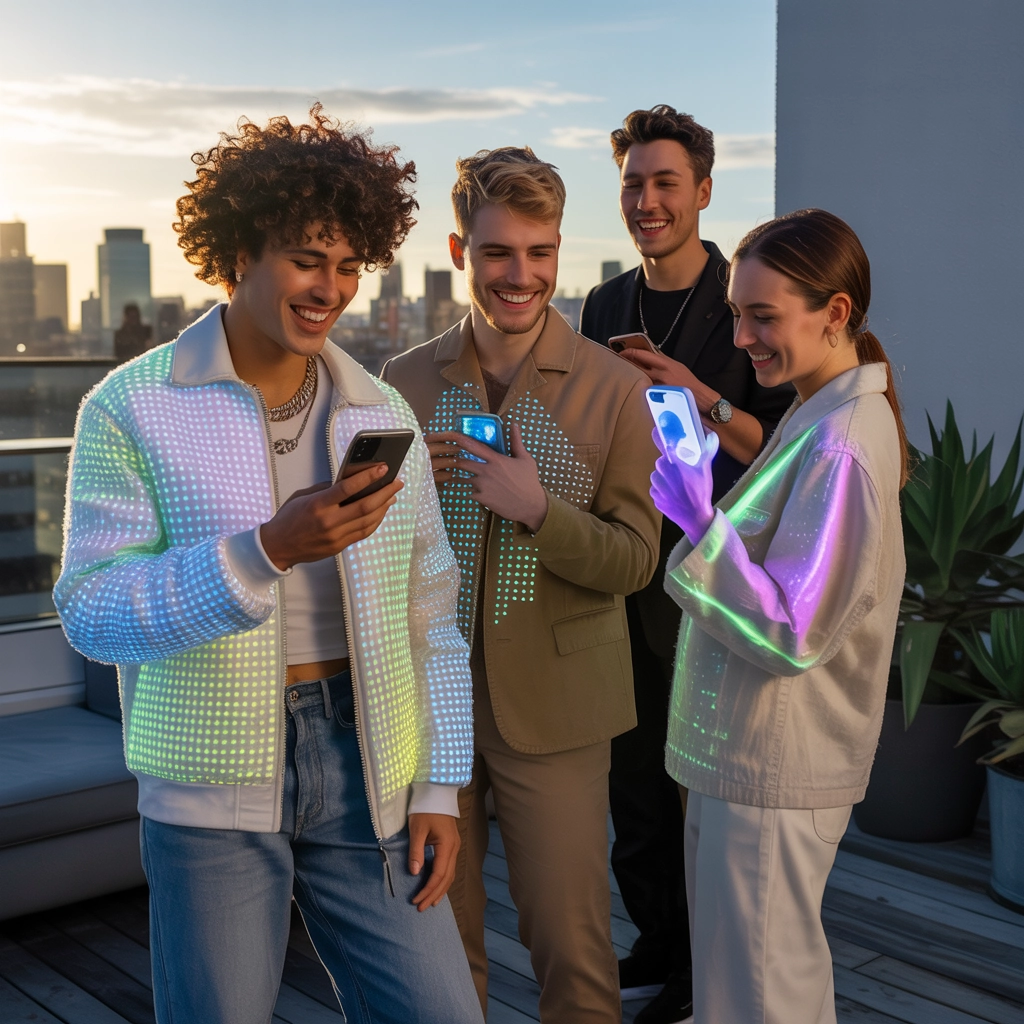
From the Runway to Reality: The Rise of Digital Fashion and What It Means for Your Wardrobe
Share
From the Runway to Reality: The Rise of Digital Fashion and What It Means for Your Wardrobe

As someone who's spent years navigating the physical fashion world — from runway shows to photo shoots — I've been absolutely fascinated watching the digital revolution reshape our industry. Just last month, I attended a virtual fashion show where I "tried on" a stunning holographic gown without ever changing clothes. That experience got me thinking: are we witnessing the most significant transformation in fashion since the sewing machine?
Digital fashion isn't just coming — it's already here, radically changing how we create, experience, and consume style. Today, I'm breaking down what this means for your closet, your shopping habits, and the future of personal style.
What Exactly Is Digital Fashion?
Digital fashion encompasses everything from virtual clothing you can "wear" in photos and video calls to AR try-on experiences and AI-designed garments. Unlike traditional fashion that's constrained by physics, materials, and manufacturing limitations, digital fashion exists in the realm of infinite possibilities.
"The beauty of digital fashion is that it can be anything," explained digital designer Amber Jae Slooten in a recent industry panel. "A dress made of water, a jacket that defies gravity, or a hat that transforms into butterflies — the only limit is imagination."
The market for digital fashion items surged 300% in the last year alone, with major luxury houses like Gucci, Balenciaga, and Louis Vuitton all launching digital-only collections. But this isn't just high fashion playing with new toys — it's a fundamental shift in how we think about clothing.

Virtual Try-Ons: Your Fitting Room Goes Digital
Remember the frustration of ordering clothes online only to find they don't fit? That pain point is rapidly disappearing. Brands are implementing augmented reality technology that allows you to see exactly how garments will look on your body without physically trying them on.
I recently tested ZARA's AR mirror that let me swipe through their entire summer collection in seconds. The technology mapped my body measurements so precisely that when I ordered the pieces I liked, they fit perfectly. No returns necessary.
But it goes beyond just trying on existing clothes. Apps like DressX and The Fabricant let you purchase digital-only garments that can be "worn" in photos and across social media. Upload a picture, and they'll digitally dress you in exclusive designs that would be impossible to create physically.
The implications for influencers and content creators are enormous. Why purchase a physical outfit worn once for a photoshoot when a digital version costs a fraction of the price and creates zero waste? It's no wonder that 40% of Gen Z and Millennial fashion enthusiasts say they're interested in purchasing digital fashion items.
From Pixels to Prestige: Digital-Only Collections
Digital fashion isn't just a novelty — it's becoming a legitimate status symbol. Last year, a digital Gucci bag sold for more than its physical counterpart in an NFT auction. Meanwhile, digital fashion houses with no physical presence are commanding respect in the industry.
One standout example is The Fabricant, whose digital-only designs have appeared in Vogue and been "worn" by celebrities at virtual events. Their pieces exist solely as 3D files that can be applied to photos or worn in virtual environments like Decentraland and The Sandbox.
"What we're seeing is the birth of an entirely new fashion ecosystem," notes Kerry Murphy, founder of The Fabricant. "One where creative expression isn't limited by material constraints or manufacturing capabilities."
For consumers, this means unprecedented access to high fashion. A $10,000 couture gown may be out of reach physically, but its digital twin might cost $100 — still delivering the social recognition without the prohibitive price tag.

The Ultimate Sustainable Fashion Solution
The environmental implications of digital fashion cannot be overstated. The fashion industry currently accounts for about 10% of global carbon emissions and nearly 20% of wastewater. Digital garments, by contrast, require no physical materials, no shipping, and create zero waste.
"Each digital garment saves approximately 3,300 liters of water and 17kg of CO2 compared to its physical counterpart," explains Emma Sandberg, sustainability researcher at the Fashion Innovation Agency. "If even 10% of fashion consumption went digital, the environmental impact would be enormous."
This isn't about replacing your entire wardrobe with digital alternatives. Rather, it's about reconsidering which items need to exist physically. Do you really need that statement piece you'll wear once for Instagram? Could that be digital instead, while you invest in high-quality physical basics that last for years?
As someone who's seen firsthand the incredible waste in fashion photoshoots, I find this possibility revolutionary. The industry can maintain its creative output while dramatically reducing its environmental footprint.
AI Stylists and Personalized Design
Artificial intelligence is transforming not just how clothes are made, but how they're styled and recommended. AI algorithms can now analyze your personal style, body type, and preferences to suggest outfits that work specifically for you.
Stitch Fix and Amazon's "Personal Shopper" already use AI to recommend physical clothing, but digital fashion takes this personalization even further. Imagine an AI that designs unique garments specifically for you based on your preferences, or that can remix existing designs to create something perfectly tailored to your taste.
I recently experimented with an AI styling app that created a custom virtual wardrobe for me based on my favorite pieces and style icons. The suggestions were surprisingly spot-on — and it even showed me how to pair items I already owned in ways I'd never considered.

What This Means for Your Wardrobe (Physical and Digital)
So how does all this technology actually impact your closet? Here's my prediction for how the average fashion lover's wardrobe will evolve in the next five years:
- Your physical wardrobe will become more curated — fewer, better-quality pieces that last longer and serve multiple functions.
- You'll have a digital wardrobe for social media and virtual spaces — particularly for statement pieces that might be impractical or too expensive in real life.
- Shopping will become more immersive and less wasteful — you'll try everything virtually before purchasing, dramatically reducing returns.
- Personal style will become more experimental — with digital fashion removing financial and practical barriers to bold style choices.
- The line between designer and consumer will blur — as AI and digital tools make it easier for anyone to design and modify their own clothes.
This doesn't mean physical fashion is going away. There's an irreplaceable joy in the texture of fabrics, the weight of a well-made garment, and the sensory experience of dressing in something beautiful. Digital fashion will complement, not replace, these experiences.
"The future is phygital," explains fashion futurist Karinna Nobbs. "A blend of physical and digital that takes the best of both worlds."
Embracing the Digital Fashion Future
As someone who loves both the artistry of high fashion and the practicality of everyday style, I'm genuinely excited about digital fashion's potential. It democratizes access to creative expression, reduces environmental impact, and opens up possibilities that physical clothing simply cannot achieve.
If you're curious about dipping your toe into digital fashion, here are some entry points:
- Try a virtual try-on experience with retailers like ASOS, Walmart, or Warby Parker
- Experiment with digital-only garments through apps like DressX or The Fabricant
- Follow digital fashion creators on social media to see the cutting edge of what's possible
- Consider whether your next "Instagram outfit" could be digital instead of physical
The most exciting part of this revolution is that we're just at the beginning. As technologies like AR glasses become mainstream and the metaverse develops, the possibilities for digital fashion will expand exponentially.
I'd love to hear your thoughts on digital fashion. Would you "wear" a digital outfit? Have you already tried virtual try-ons? The conversation around fashion's digital future is just beginning, and I'm thrilled to be exploring it with you.
For more fashion insights and industry perspectives, check out my other articles on my blog or browse my portfolio to see how I'm blending traditional and digital fashion in my own work.
